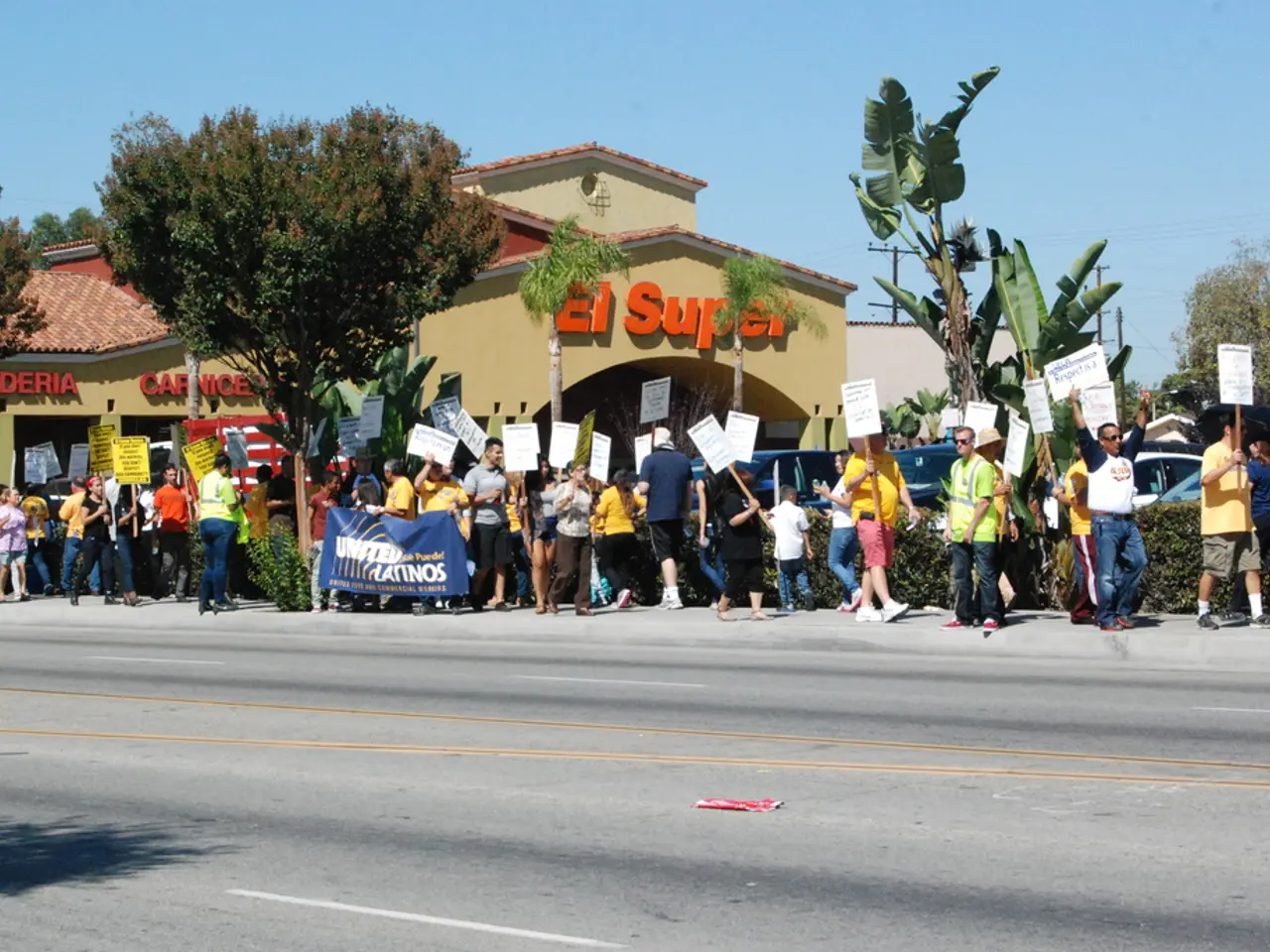Politics Sector Using Predictive Analysis to Boost Public Approval
================================================================
In the digital age, predictive analytics is transforming the political landscape, making it more data-driven and dynamic. Affordable Software-as-a-Service (SaaS) tools and open-source models are democratizing predictive analytics, making it accessible to smaller and regional campaigns.
Predictive analytics in politics involves the use of data modeling, statistical algorithms, and machine learning techniques to forecast voter behavior, election outcomes, and campaign performance. Real-time analytics dashboards help campaigns adjust their messaging, event strategies, and media spend dynamically based on incoming campaign data.
One of the key tools in predictive analytics is propensity scores, which represent the likelihood that a voter will take a specific action, such as voting, based on data patterns. Predictive models offer valuable directional insights, but their accuracy depends on data quality, model design, and voter volatility.
The use of predictive analytics in politics has implications for democracy. While it reshapes how political actors engage with voters and how democratic publics form, often leading to more fragmented and market-segmented electorates, it also fosters more informed debates and potentially democratizes political insights beyond traditional power centers.
Ethical concerns around predictive analytics in politics include data privacy, voter manipulation, lack of transparency, profiling bias, and over-reliance on black-box AI systems. To ensure responsible use, campaigns should be transparent, obtain consent, validate models regularly, and use analytics to inform, not replace, human judgment.
Microsegmentation, a technique that breaks down voters into narrowly defined groups based on behavior, issues, or demographics, allows for highly targeted outreach. Machine learning helps uncover complex patterns, improves prediction accuracy over time, and automates insights from large-scale data inputs.
Predictive analytics is not just for national elections. It is also useful for local or state elections, allowing campaigns to analyze hyper-targeted voter behavior, regional issues, and resource deployment at the constituency level.
Technology will continue to play a significant role in influencing voters and supporting political candidates. Future developments in predictive analytics will include real-time behavioral predictions, integration with AI avatars, enhanced voter sentiment analysis, and tighter regulation of data ethics.
In conclusion, while AI and predictive analytics hold promise for improving democratic engagement and policy responsiveness, they simultaneously introduce complexities and risks related to social fragmentation and the quality of democratic deliberation. The ultimate impact on democracy and voter satisfaction is an important but still underexplored area.
References:
[1] Gelman, A., & King, G. (2013). Red state, blue state, rich state, poor state: Why Americans vote the way they do. Harvard University Press.
[2] Lazer, D., Baum, M., Benkler, Y., & Tucker, J. (2018). The social life of information. MIT Press.
[3] Norris, P. (2004). Digital divide: Civic engagement, information poverty, and the Internet worldwide. Cambridge University Press.
- Politicians are increasingly leveraging social media ads to reach voters and influence public opinion, drawing on the power of data-and-cloud-computing and artificial-intelligence.
- As the digital age evolves, campaign strategy consulting firms are integrating advanced analytics and machine learning into their services, offering predictive insights for political branding and resource management.
- General news outlets and blogs have become crucial resources for staying updated on policy-and-legislation, cybersecurity, and technology advancements impacting the political landscape.
- The use of predictive analytics in political campaigns can lead to more informed debates and democratized political insights, but also raises ethical concerns about data privacy, voter manipulation, and lack of transparency.
- With the help of analytics, political actors can microsegment voters, enabling highly targeted outreach and resource allocation based on narrowly defined groups and issues.
- Real-time behavioral predictions, integration with AI avatars, and enhanced voter sentiment analysis are just a few developments anticipated in the future of predictive analytics and technology in politics.
- To ensure responsible use of predictive analytics, campaigns should prioritize transparency, obtain voter consent, validate models, and avoid over-reliance on black-box AI systems.
- As we move forward, it is essential to investigate the ultimate impact of AI and predictive analytics on democracy and voter satisfaction, balancing the potential for improved democratic engagement with potential risks related to societal fragmentation and quality of deliberation.




